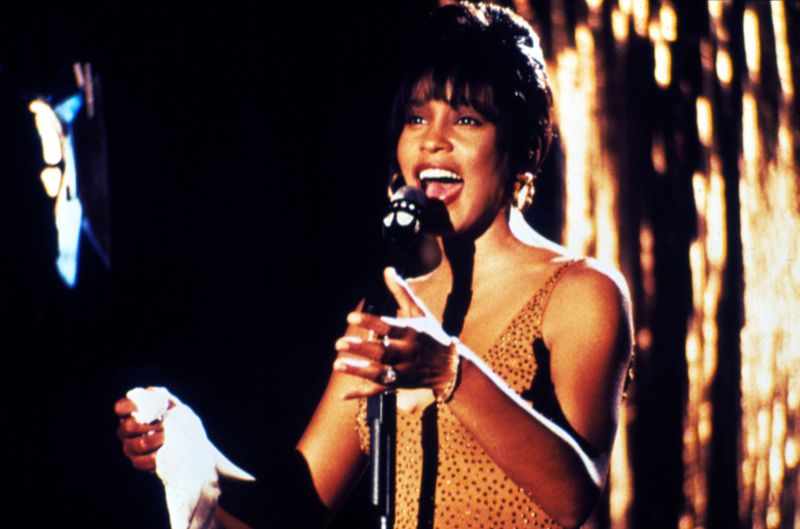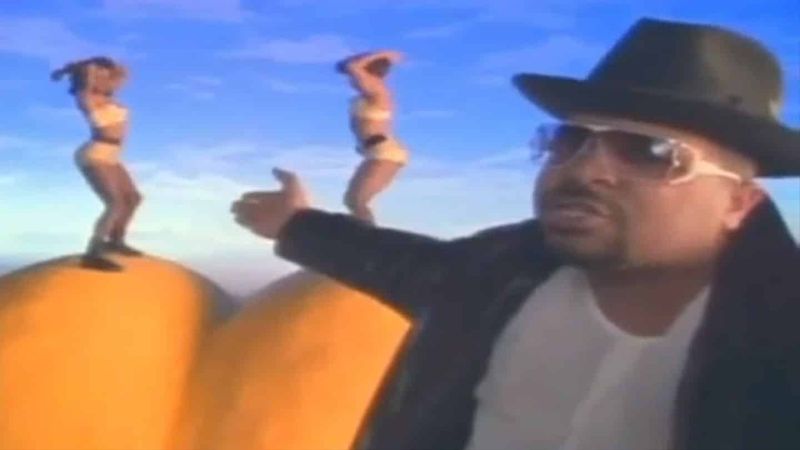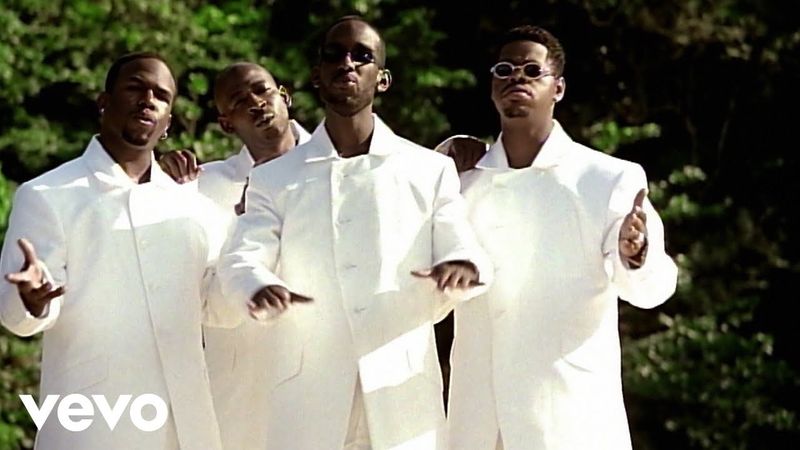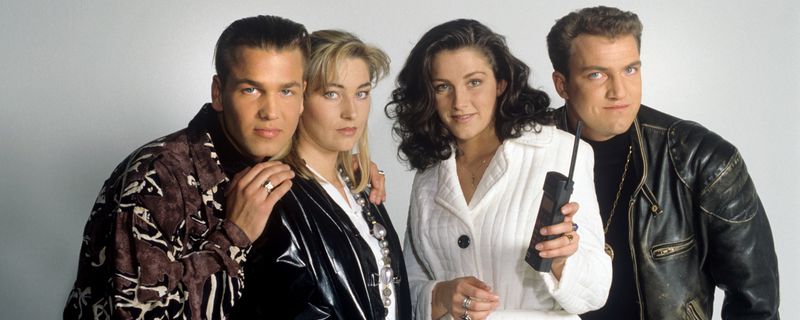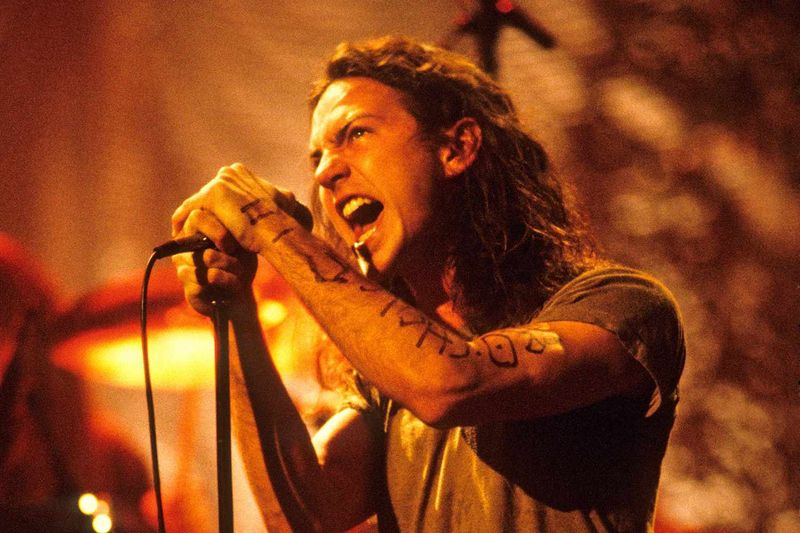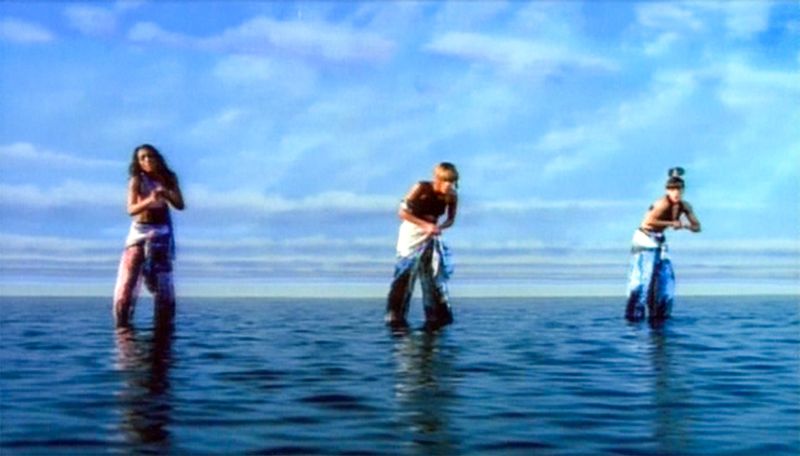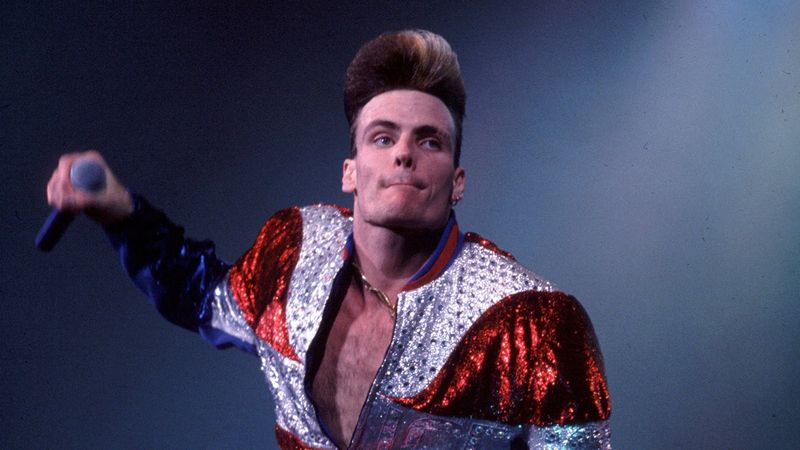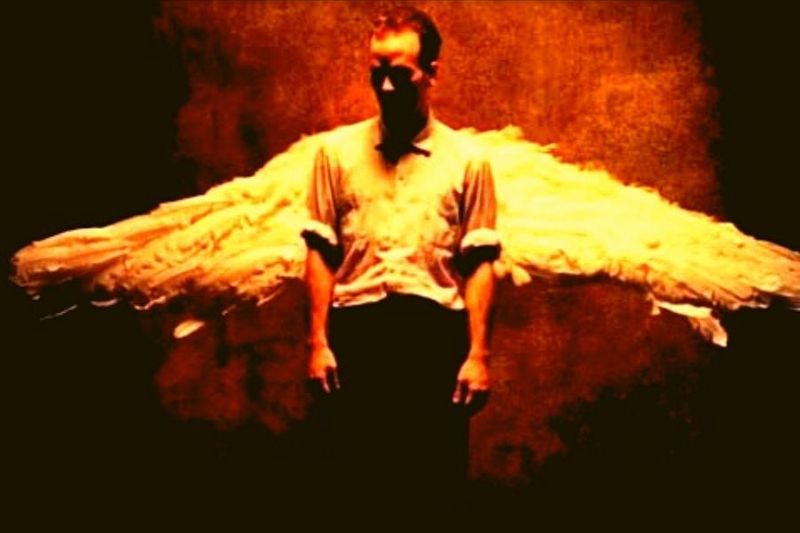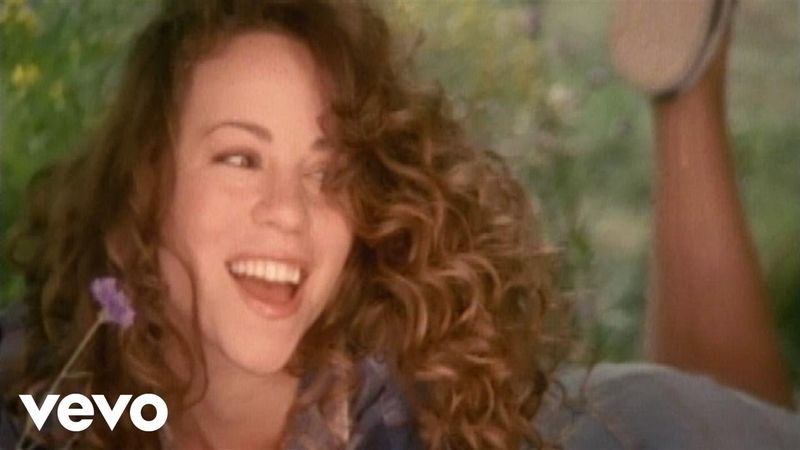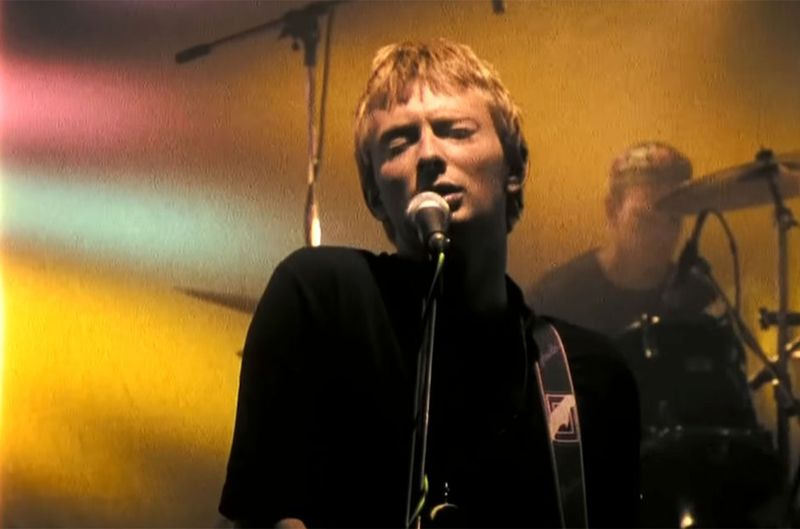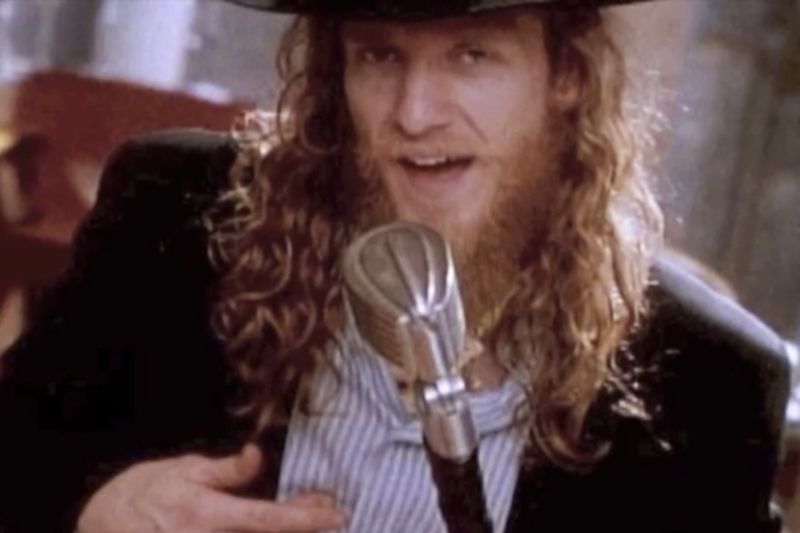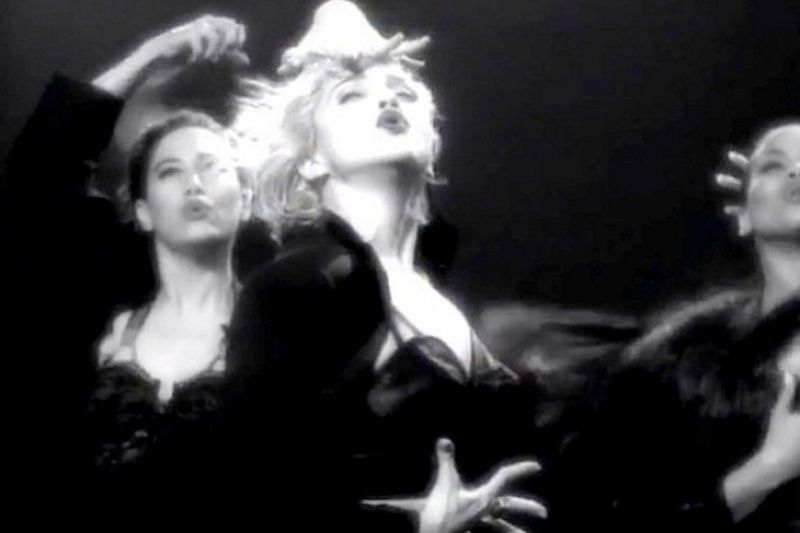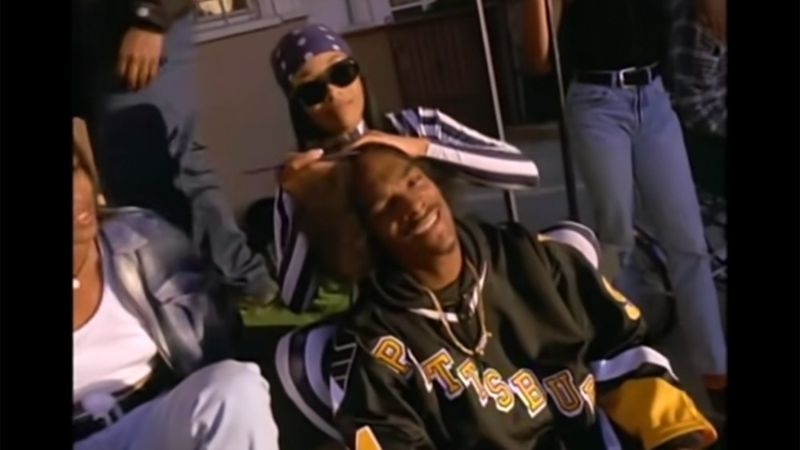The early 1990s marked a special time in music history when grunge, pop, hip-hop, and dance tracks collided to create an unforgettable soundtrack. These songs weren’t just popular—they became the backdrop to our lives, forever connected to specific memories and feelings. When you hear these tracks today, they can instantly whisk you back to a time of flannel shirts, dial-up internet, and cassette tapes.
1. Nirvana’s “Smells Like Teen Spirit” (1991)
Kurt Cobain’s raw, angst-filled anthem crashed into mainstream culture like nothing before it. The distorted guitar intro alone is enough to send shivers down your spine, immediately conjuring images of mosh pits and flannel shirts. The music video, with its anarchic high school pep rally, became an MTV staple that defined Generation X’s disillusionment. When Cobain growls “Here we are now, entertain us,” it still feels like a battle cry for the disaffected youth. The song didn’t just top charts—it revolutionized music by bringing alternative rock into living rooms across America, forever changing what could be considered “pop music.”
2. Whitney Houston’s “I Will Always Love You” (1992)
From the first a cappella notes, Whitney’s powerhouse rendition of Dolly Parton’s country ballad commands attention. Released as part of “The Bodyguard” soundtrack, this version transformed a gentle love song into an epic vocal showcase that dominated radio for months. The famous key change still gives goosebumps to listeners decades later. Houston’s flawless control and emotional delivery turned what could have been just another movie song into one of the best-selling singles of all time. For many ’90s kids, this was the song that taught us what a truly extraordinary voice sounds like—setting an impossibly high standard for vocal performance.
3. Sir Mix-a-Lot’s “Baby Got Back” (1992)
“Oh my god, Becky, look at her butt”—those opening words immediately signal what’s coming next. This cheeky celebration of curves became a cultural phenomenon that had suburban kids memorizing lyrics their parents wished they hadn’t. The music video, with its giant posterior sculpture, was so controversial that MTV initially banned it before relenting to its massive popularity. Beyond the humor, the track actually challenged beauty standards of the time by celebrating body types that weren’t typically glorified in mainstream media. At every ’90s school dance, this song guaranteed a packed floor and teenagers awkwardly attempting dance moves they’d never try otherwise.
4. Boyz II Men’s “End of the Road” (1992)
Four-part harmony never sounded so heartbreaking. The Philadelphia quartet’s emotional ballad about a relationship’s end spent a record-breaking 13 weeks at #1, becoming the soundtrack to countless teenage breakups across America. The group’s matching white outfits and synchronized choreography in the music video perfectly complemented their seamless vocal blend. Many millennials can still picture themselves dramatically lip-syncing this in their bedroom mirrors, feeling emotions they hadn’t even experienced yet. The a cappella bridge with its ascending “Don’t you know” refrain represents everything magical about ’90s R&B—soulful, technically impressive, and unapologetically emotional.
5. Dr. Dre’s “Nuthin’ But a ‘G’ Thang” (1992)
The laid-back groove and Snoop Dogg’s smooth delivery made this West Coast anthem impossible to resist. The track’s opening piano sample immediately transports listeners to sun-drenched California streets and lowriders bouncing to the beat. The iconic music video, showing neighborhood barbecues and house parties, captured the everyday vibe of early ’90s Los Angeles. For many suburban kids, this offered a glimpse into a lifestyle they’d only imagined, with Dre and Snoop as their tour guides. More than just a hit song, this track introduced G-funk to the mainstream and established Dr. Dre as hip-hop’s premier producer, forever changing the sound of rap music.
6. Ace of Base’s “The Sign” (1993)
Swedish pop perfection that conquered American radio with its catchy chorus and distinctive reggae-influenced beat. The moment that synth riff starts, you’re mentally transported back to roller rinks and shopping mall food courts of the mid-90s. The song’s optimistic message about seeing “the sign” and opening up your eyes resonated with listeners seeking clarity. Lead singer Jenny Berggren’s unique vocal tone, with its slight accent, made Ace of Base instantly recognizable among the sea of pop acts. As one of the biggest international crossover hits of the decade, this track reminds us of a time when Swedish pop music began its domination of global charts that continues today.
7. Pearl Jam’s “Jeremy” (1992)
Eddie Vedder’s impassioned vocals tell the haunting story of a troubled teen, creating one of grunge’s most powerful statements. The song’s building intensity mirrors its disturbing narrative, culminating in a chorus that’s impossible to forget. The controversial music video, depicting classroom bullying and its tragic consequences, became one of MTV’s most talked-about clips. For many ’90s teens, this was more than music—it was a raw acknowledgment of the social issues they witnessed in their own schools. With its unflinching lyrics and Vedder’s emotional delivery, “Jeremy” represented how grunge brought serious subject matter into mainstream music, giving voice to feelings many young people couldn’t express.
8. TLC’s “Waterfalls” (1995)
The smooth R&B groove masks this song’s serious messages about HIV and drug dealing, showcasing TLC’s ability to blend social commentary with irresistible hooks. The iconic water-themed music video, with its groundbreaking special effects, remains etched in the memory of anyone who watched MTV in 1995. Left Eye’s rap verse added an urban edge to the track’s pop sensibilities. The trio’s matching silk outfits and choreography embodied the ’90s girl group aesthetic that influenced fashion trends among young women everywhere. As one of the decade’s most thoughtful hit songs, “Waterfalls” reminds us of a time when important messages could be delivered through catchy choruses that still get stuck in our heads decades later.
9. Vanilla Ice’s “Ice Ice Baby” (1990)
Love it or hate it, the moment you hear that bass line (borrowed from Queen), you’re instantly back in 1990. Rob Van Winkle’s rap novelty hit became a cultural phenomenon that had suburban kids attempting breakdance moves in their living rooms. The music video, featuring Ice’s signature haircut and parachute pants, epitomized early ’90s fashion in all its questionable glory. Despite later becoming the punchline of jokes, the track was genuinely groundbreaking as the first rap song to top the Billboard Hot 100. Decades later, people still know every word to that “too cold, too cold” chorus—proof that sometimes the most memorable songs aren’t necessarily the most critically acclaimed.
10. Sinéad O’Connor’s “Nothing Compares 2 U” (1990)
The stark close-up of O’Connor’s face in the music video, with tears streaming down her cheeks, created one of the decade’s most unforgettable visual moments. Her shaved head and raw emotion stood in stark contrast to the polished pop stars of the era. Prince wrote the song, but O’Connor’s haunting interpretation made it entirely her own. The minimalist arrangement puts her powerful, trembling voice front and center, allowing every crack and quiver to convey heartbreak in its purest form. Beyond its musical impact, the song represents a time when vulnerability in mainstream music felt revolutionary and when a simple video of just a face could captivate millions.
11. R.E.M.’s “Losing My Religion” (1991)
Michael Stipe’s cryptic lyrics paired with Peter Buck’s distinctive mandolin created an unlikely hit that defined alternative rock’s breakthrough into the mainstream. The song’s title—a Southern expression for reaching your breaking point—confused many listeners who thought it was about faith. The artsy, Tarsem Singh-directed music video, with its references to Gabriel García Márquez and religious imagery, played constantly on MTV. For many young viewers, this was their first exposure to art-house aesthetics in a music video format. The track’s success marked a turning point when college radio sounds crossed over to pop stations, forever blurring the lines between alternative and mainstream music.
12. Mariah Carey’s “Dreamlover” (1993)
Mariah’s effortless vocal runs over a sample of the Emotions’ “Blind Alley” created summer pop perfection. The sun-drenched music video featuring Carey frolicking in fields wearing denim cutoffs epitomized carefree ’90s vibes. This track showcased Carey’s evolution from ballad singer to R&B-pop hybrid artist. The production by Dave Hall (with additional work by Diddy) blended hip-hop elements with pop sensibilities, creating a template that would influence countless female artists. Those signature high notes remind listeners of a time when vocal gymnastics were becoming increasingly important in pop music, with Mariah leading the charge as the undisputed queen of the whistle register.
13. Radiohead’s “Creep” (1992)
Thom Yorke’s vulnerable admission of alienation and self-loathing struck a chord with anyone who ever felt like an outsider. The song’s quiet-loud dynamic, punctuated by Jonny Greenwood’s aggressive guitar stabs before the chorus, created musical tension that perfectly matched its lyrical angst. Ironically, this anthem for misfits became so popular that the band grew to resent it. College radio embraced the track first, but it eventually crossed over to mainstream stations, introducing millions to Radiohead years before they would revolutionize rock music. For many ’90s teens, singing along to “I’m a creep, I’m a weirdo” provided cathartic release for feelings they couldn’t otherwise express.
14. C+C Music Factory’s “Gonna Make You Sweat” (1990)
“Everybody dance now!” Those three words instantly filled dance floors then—and still do today. This high-energy dance track merged house music with hip-hop elements, creating an irresistible hybrid that dominated clubs and workout classes. The music video featured Freedom Williams rapping alongside dancers in spandex performing high-impact aerobics moves. Martha Wash provided the powerful vocals, though controversy erupted when model Zelma Davis appeared in the video instead—highlighting issues of body image in the music industry. With its pulsing beat and commanding vocals, this track embodies the optimistic, energetic dance music that helped define the early ’90s party scene.
15. Seal’s “Kiss From a Rose” (1994)
Originally released in 1994, this ballad found massive success when featured in “Batman Forever” the following year. The song’s unusual structure and cryptic lyrics about addiction created a mysterious atmosphere that stood out from typical pop fare. Seal’s distinctive voice, with its rich texture and emotional delivery, soars over the orchestral arrangement. The dramatic chorus with its “ba-ya-ya” refrain became instantly recognizable, even to people who couldn’t understand the rest of the lyrics. The song’s music video, featuring Seal singing atop a building with the Bat-Signal illuminating the night sky, cemented its connection to mid-’90s pop culture and superhero films.
16. Spin Doctors’ “Two Princes” (1991)
The bouncy, carefree guitar riff and Chris Barron’s playful vocals created an earworm that defined the lighter side of alternative rock. The song’s simple tale of competing suitors resonated with listeners through its infectious chorus and upbeat energy. Released during grunge’s heyday, “Two Princes” offered a more optimistic counterpoint to the angst dominating rock radio. The band’s tie-dyed aesthetic and jam-band influences connected with college students who weren’t fully embracing the Seattle sound. Even those who claim to hate this song can probably still recite every word—especially that rapid-fire “just go ahead now” part that everyone attempts but few can actually nail.
17. Madonna’s “Vogue” (1990)
Strike a pose! Madonna’s celebration of ballroom culture brought underground LGBTQ+ dance styles to the mainstream. The black-and-white music video, directed by David Fincher, featured Madonna and her dancers recreating poses from the golden age of Hollywood. The song’s house-inspired beat and spoken interlude listing classic film stars created a perfect marriage of nostalgia and cutting-edge club culture. For many suburban kids, this was their first exposure to voguing and the ballroom scene that would later gain wider recognition. As one of Madonna’s most iconic hits, the track represents her unmatched ability to spot underground trends and transform them into global pop phenomena.
18. Snoop Dogg’s “Gin and Juice” (1993)
The laid-back groove and Snoop’s effortless flow created the ultimate West Coast party anthem. Dr. Dre’s production featuring that distinctive whistling synthesizer became the soundtrack for countless gatherings, with or without the beverages mentioned in the title. The music video portrayed a house party in Snoop’s neighborhood, introducing suburban America to Long Beach culture. Snoop’s unique delivery—unhurried, smooth, and instantly recognizable—established him as one of hip-hop’s most distinctive voices. Beyond its party vibe, the track represents a pivotal moment when gangsta rap was crossing over to mainstream acceptance, bringing its unfiltered portrayal of street life to a wider audience.
19. Crash Test Dummies’ “Mmm Mmm Mmm Mmm” (1993)
Brad Roberts’ uniquely deep baritone voice singing about childhood trauma created one of the decade’s most distinctive and unusual hits. The song’s odd title—literally the sound of humming—perfectly matched its quirky narrative about three children with different problems. The haunting melody and folky arrangement stood out on radio playlists dominated by grunge and hip-hop. For many listeners, this Canadian band’s breakthrough hit represented the eclectic nature of early ’90s alternative rock, when unusual songs could unexpectedly capture mainstream attention. The track’s cryptic storytelling sparked endless debates about its meaning among listeners, long before internet forums made such discussions commonplace.


